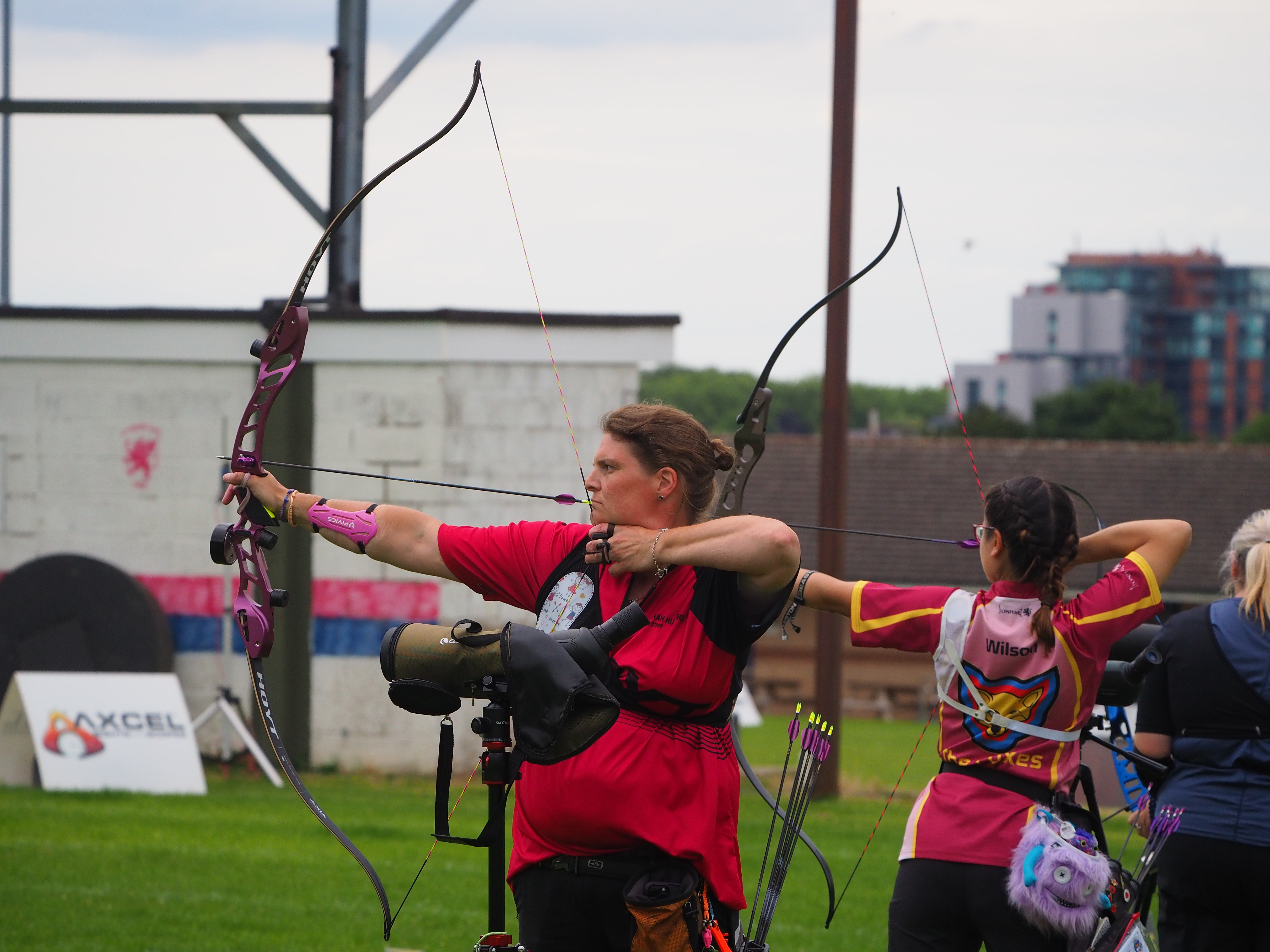Setting up your barebow can be daunting, but understanding the basics will help you find your ideal setup. This guide covers key components like tiller, bow weight, arrow rest, and pressure buttons to get you started.

Experimentation is key to finding the perfect barebow setup. Consider your shooting style, personal preference, and equipment options to optimise your performance. Remember, there's no one-size-fits-all approach, so enjoy the process of fine-tuning your bow.
The tiller is the different between how far each limb is dialled out. A positive tiller means that the gap between the limb and the riser is bigger at the top, neutral tiller is equal, and with a negative tiller the gap is bigger at the bottom.
Tiller is an important aspect of an efficient bow. However, when shooting barebow, the differences in how you choose to aim and manipulate the string will dictate the best tiller for you. If you shoot instinctively, you should start with a neutral tiller, because you probably use a Mediterranean grip (one finger above and two below the arrow), so you anchor point is the same no matter where you aim.
If you decide to string walk (keeping the point of the arrow on the gold but moving your fingers down the string, away from the nock, to shoot at different distances), you may prefer a positive tiller. The further down the string you need to string walk, or ‘crawl’, then the bigger the tiller on the top limb.
Without stabilisers, the top limb of the bow should tip towards your head after you’ve released and arrow. To stop this, you can add a small weight to your riser.
The idea is when you release the arrow, rather than the bow falling away from you as you it would with a recurve, it should stay upright and jump forward in your hand.
The actual weight depends on how comfortable you feel. You don't want to make the bow too heavy, so the optimal weight would often be around 300g, but it all depends on what feels best for you. Remember, after 100 or so arrows, you don't want your bow arm to be finished! Building strength is all a part and parcel with archery but it's important you feel comfortable shooting your equipment.
The arrow rest you use will also make significant changes to the arrow's flight. There are many types of rest available, but not all of them are the best for barebow.
The first option is also the cheapest, is a stick-on rest, though stay away from the stick-on wire rests as, when string walking, they can break very easily and bend out of shape.
The second option is a wrap-around rest, which are highly recommended due to their strength and durability. For string walkers, the downside is that, particularly when shooting closer distances, the angle of the arrow shaft will project the arrow down through the gap between the plunger and the wire. You won't get good clearance, but they are still very effective.
An alternative for string walkers is a similar type of wrap around rest designed specifically for use by barebow archers, which drop away as the arrow is released. It can take patience to tune the rest to properly drop away, but it provides a clean shot. These rests are more expensive that the other two options, so it might be that you try one of the cheaper alternatives at first.
Some people recommend using a pressure button, also known as a plunger, when shooting barebow. The button helps to counter the Archers Paradox (as seen in Brave) and straighten the flight of the arrow as it leaves the bow.
For recurve, where the higher the limb poundage results in the flatter the arrow flight, with barebow this is not always the case, and going too high could be detrimental when it comes to aiming.
That said, people can easily hit 100 years with a 22lb bow, so there is no such thing as too weak or too strong. However, in order to get a good point-on aim, a bow that weighs between 35lb and 40lb off the fingers is a good choice. However, it’s all about your personal preference and you should in no way start shooting higher poundage limbs – step up slowly.
Thanks to Adam at Wales Archery.